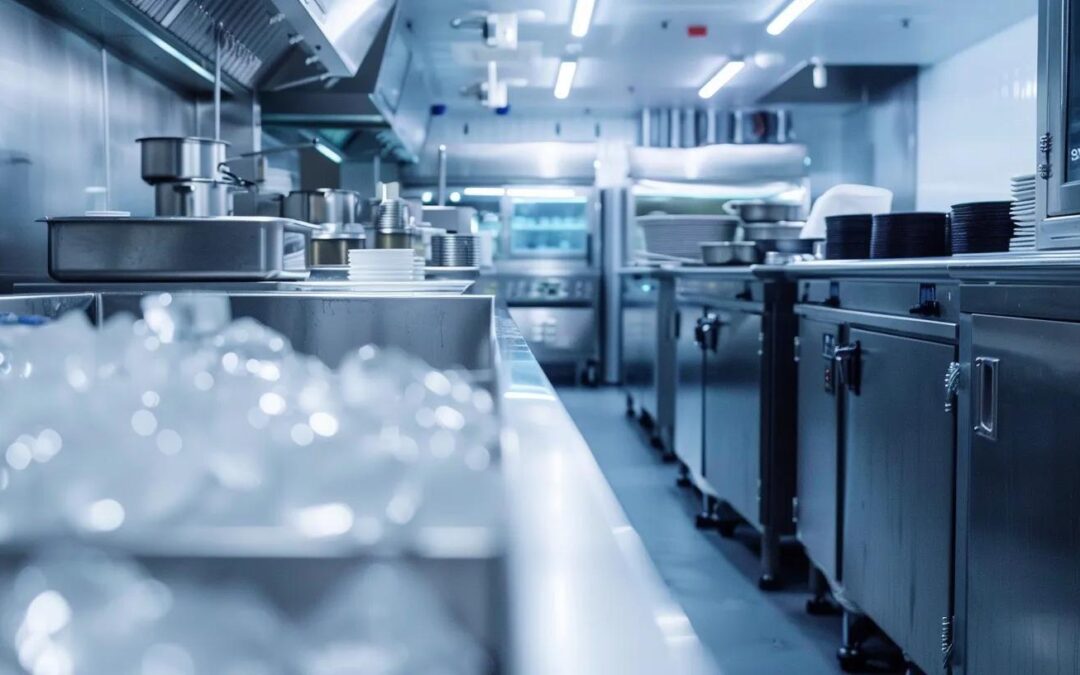Whether you’re operating a seafood processing facility, a produce distribution center, a meat or poultry plant, or an institutional food service operation, choosing the right industrial ice machine is crucial. The right system ensures consistent cooling, product quality, and overall operational efficiency.
With multiple models, capacities, and configurations available, selecting the right machine can feel overwhelming. This guide breaks down the most important factors to consider before making your investment.
1. Understand Your Daily Ice Demand
Start by calculating how much ice your operation needs during peak usage. Undersizing your equipment can cause production delays, while oversizing increases utility costs.
Arctic-Temp® offers four primary capacity ranges:
500 Series: ~2,500 lbs/day
750 Series: ~4,500 lbs/day
1000 Series: ~6,500 lbs/day
1500 Series: ~10,000 lbs/day
For example, the Model 500 AR-L is a compact remote-condensing unit capable of producing 2,500 lbs of hard-cracked ice per day, ideal for mid-volume industrial facilities.
2. Identify the Right Ice Type
Different industries use different ice types—but Holiday Ice, Inc. specializes in the one that works best for industrial cooling:
Hard-Cracked Ice
Produced using Arctic-Temp® vertical tube evaporators, this ice is:
Dense
Long-lasting
Ideal for rapid cooling
Perfect for seafood, meat, poultry, produce, bakery, and institutional processing
Holiday Ice does not manufacture flake, cube, or block ice machines—so references to those ice types are informational, not product offerings.
If your facility relies on durability and predictable cooling performance, hard-cracked ice is the optimal choice.
3. Consider Your Space and Installation Environment
Arctic-Temp® machines come in two installation configurations:
Remote Condensing Units (AR-L / RCU)
Condensing unit installed away from the evaporator
Ideal for hot climates or facilities needing quieter indoor temperatures
Skid-Mounted Units (SM-L)
Self-contained
Compact footprint
Easy to install where space is limited
Always consider ventilation, electrical capacity, plumbing, and the environmental temperature of the installation area.
4. Energy Efficiency and Operating Costs
Industrial ice machines consume significant water and electricity. Choosing an energy-efficient model can greatly reduce long-term operating costs.
Arctic-Temp® machines feature:
Copeland compressors
Water recirculation systems
Insulated vertical tube freezing chambers
Hot-gas defrost systems
Realistic hot-climate performance ratings
These features minimize waste while maintaining high production output.
5. Maintenance and Serviceability
Look for machines designed with:
Accessible components
Standard, non-proprietary parts
TIG-welded stainless steel construction
Factory-tested, vacuum-tested, and pre-charged systems
Arctic-Temp® machines are engineered for easy maintenance, reducing downtime and improving reliability for long-term use.
6. Safety and Compliance
If your ice contacts food products, ensure your equipment meets industry standards:
USDA-friendly stainless steel
Clean, sealed ice-forming zones
Food-safe design and materials
Arctic-Temp® machines are built to meet strict industrial and food-processing requirements.
Making the Smart Choice
Choosing the right industrial ice machine starts with understanding your daily production needs, ice type, space, and long-term operational goals.
Whether you operate a seafood facility, a produce warehouse, a poultry plant, a bakery, or an institutional kitchen, the right system supports productivity, reliability, and compliance.
For compact, mid-volume production, the Model 500 AR-L remains one of the most efficient and versatile options available.

